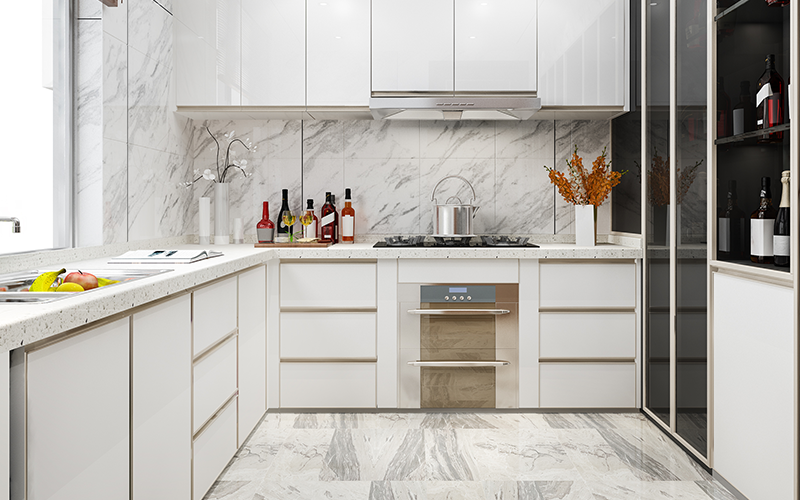Welcome to Naveen Ceramic & Vitrified Tiles...

Naveen Complex,
7th and 8th Floor,14, M.G.Road, Bangalore – 560001

Send your mail at

Have any question?
Benefits of Installing Vitrified Tiles in Your Kitchen

The kitchen is the heart of the home, where meals are prepared, memories are created, and family and friends gather. When designing or renovating your kitchen, choosing the right flooring material is a critical decision. Vitrified tiles have gained popularity as a versatile and practical choice for kitchen flooring. In this comprehensive guide, we will delve into the world of vitrified tiles, exploring their pros, cons, types, installation, and maintenance to help you make an informed decision for your kitchen.
What Are Vitrified Tiles?
Vitrified tiles are a type of ceramic tile that undergoes a unique manufacturing process. They are made by fusing silica, clay, and other materials at high temperatures, resulting in a non-porous, glass-like surface. This process gives vitrified tiles their impressive durability and resistance to stains, making them an excellent option for kitchen flooring.
The Benefits of Vitrified Tiles in the Kitchen:
1. Vitrified tiles are renowned for their exceptional durability. They can withstand heavy foot traffic, the movement of kitchen appliances, and even the occasional dropped utensil without chipping or cracking. This durability ensures a long-lasting kitchen floor that can endure the rigours of daily use.
2. Water and Stain Resistance: Kitchens are prone to spills, whether it’s water, oil, or food. Vitrified tiles’ non-porous surface makes them highly resistant to water absorption and stains. This feature is invaluable in maintaining a clean and hygienic kitchen environment.
3. Easy Maintenance: Keeping your kitchen clean is a top priority, and vitrified tiles simplify this task. Regular sweeping and occasional mopping are all that’s needed to maintain their shine. Unlike some other materials, they don’t require special cleaning products or rigorous maintenance.
4. Wide Range of Designs: Vitrified tiles come in a vast array of colours, patterns, and sizes. Whether you prefer a sleek, modern look or a more traditional aesthetic, you can find vitrified tiles that complement your kitchen’s style.
5. Temperature Resistance: Cooking often involves drastic temperature changes. Vitrified tiles are designed to withstand these fluctuations without warping or cracking. This resilience ensures your kitchen floor remains intact over time.
6. Cost-Effective: While they offer numerous advantages, vitrified tiles are often more budget-friendly than natural stone or hardwood flooring options. This cost-effectiveness makes them an attractive choice for homeowners seeking both quality and affordability.
7. Resilience to Chemicals: In a kitchen, various chemicals and cleaning agents are used. Vitrified tiles are resistant to the corrosive effects of many household chemicals, ensuring that accidental spills won’t harm your flooring.
8. Colour Fastness: Over time, some flooring materials may fade or discolour due to exposure to natural light. Vitrified tiles, however, are known for their colour fastness, preserving the vibrancy of your kitchen’s aesthetic for years to come.
Conclusion :
Vitrified tiles are a practical and aesthetically pleasing choice for kitchen flooring, offering durability, water resistance, and a wide range of design options. However, they are not without their drawbacks, including hardness and coldness underfoot. By considering the pros and cons in the context of your specific needs and preferences, you can confidently make an informed decision about whether vitrified tiles are the right fit for your kitchen. With proper care and maintenance, your vitrified tile kitchen floor can be a durable and attractive addition to your home for years to come.
